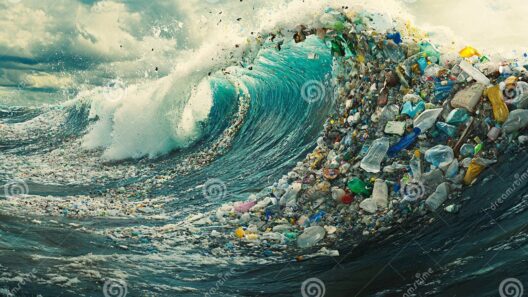Global warming, a term that has achieved ubiquity in contemporary discourse, traverses the realms of science, politics, and social consciousness. The phenomenon encapsulates the gradual increase in Earth’s average surface temperature attributed to human activities, primarily the emission of greenhouse gases. This extensive commentary delves into how people, from various walks of life, have come to recognize global warming, exploring the journey from scientific investigation to widespread public awareness.
The odyssey of understanding global warming commenced in the late 19th century, when scientists first entertained the notion that human activities could influence atmospheric conditions. Pioneering scientists, such as John Tyndall, elucidated the greenhouse effect’s mechanics, identifying gases like carbon dioxide as pivotal in regulating Earth’s temperature. This epoch marked a foundational shift, wherein empirical inquiry began to unearth the delicate balances governing our planet’s climate.
As the 20th century unfolded, burgeoning industries and the advent of technology exacerbated the emission of carbon dioxide and other greenhouse gases. Observations indicated an alarming trend: the planet was warming. In the 1970s, scientific investigations proliferated. The establishment of the Global Atmospheric Research Program underscored the urgency of climate studies. These investigations unearthed a plethora of data, evidencing the correlation between anthropogenic activities and climate change.
The accumulation of scientific evidence, however, did not immediately translate into public awareness. A notable observation is that scientific data, despite being irrefutable, often inhabits an esoteric realm, inaccessible to the everyday individual. The arcane language of academia and research can obscure vital findings from the populace. Yet, certain events served as catalysts for broader recognition. The harrowing image of glaciers melting and polar bears struggling for survival provided palpable illustrations of an abstract threat.
Three pivotal events in the late 20th century galvanized public attention towards global warming. Foremost was the publication of “Silent Spring” by Rachel Carson in 1962, which introduced the public to the environmental ramifications of chemical pollutants, foreshadowing the discussions surrounding climate change. The 1988 formation of the Intergovernmental Panel on Climate Change (IPCC) marked another decisive moment. This united effort among governments and scientists to evaluate climate data catalyzed international discourse and policy frameworks aimed at addressing climate change.
The iconic 1992 Earth Summit in Rio de Janeiro also solidified global warming as a critical issue. It was here that the United Nations Framework Convention on Climate Change (UNFCCC) was established. The summit served not only as a platform for dialogue but also crystallized the idea that global warming transcends national borders, posing a universal challenge. The mounting scientific consensus on climate change began to seep into public consciousness, fueled by media coverage and the rising visibility of environmental organizations.
Around the turn of the millennium, increasing media attention began to shape climate change perceptions. Documentaries like “An Inconvenient Truth,” featuring former Vice President Al Gore, propelled climate change into mainstream dialogue. The film’s emotional resonance and accessible presentation of scientific data struck a chord with audiences, bridging the gap between dense research and everyday understanding. The proliferation of the internet further enabled the dissemination of information, allowing grassroots movements, advocacy groups, and influenced individuals to share their perspectives on climate issues.
However, fascination with global warming does not solely emanate from scientific revelations or dramatic media portrayals. Psychological underpinnings also drive public interest and concern. Cognitive dissonance plays a role; as awareness of global warming grows, so does the disconnect between individuals’ lifestyles and their beliefs about climate change. This cognitive friction compels many to seek harmony through action—whether through lifestyle changes, political activism, or supporting sustainable initiatives. The human proclivity for narrative also factors into the discourse. People are drawn to stories that evoke empathy, such as those of communities displaced by rising sea levels or regions devastated by severe weather events, making the abstract threat of climate change more tangible and relatable.
The advent of social media has also revolutionized the dissemination of climate-related information, fostering a participatory culture where individuals can amplify their voices. Platforms enable global movements like “Fridays for Future,” sparked by student activist Greta Thunberg, to coalesce around climate action. These collective efforts harness and channel public passion towards tangible goals, an evolution which is reflective of deeper societal recognition of the interconnectedness between individual actions and global outcomes.
Furthermore, the intimate relationship between climate change and socio-economic disparities cannot be overlooked. Communities that contribute least to greenhouse gas emissions often bear the brunt of climate impacts. This inequity has sparked robust dialogues around climate justice, prompting marginalized groups to advocate for their rights and equitable solutions. The increasing awareness of these multifaceted dimensions illustrates that global warming is not merely an environmental issue but a complex social dilemma that requires holistic understanding and action.
In summary, the path to awareness about global warming is multifaceted, woven through scientific inquiry, dramatic events, and psychological motivations. The journey from initial scientific skepticism to an informed and passionate global consciousness has unfolded over decades, shaped by pivotal individuals and collective movements. As society grapples with the implications of climate change, it is vital to remain vigilant, informed, and proactive in fostering a sustainable future. The curiosity that once lingered in the scientific community has burgeoned into a global responsibility, awakening humanity to our role as stewards of the planet.







